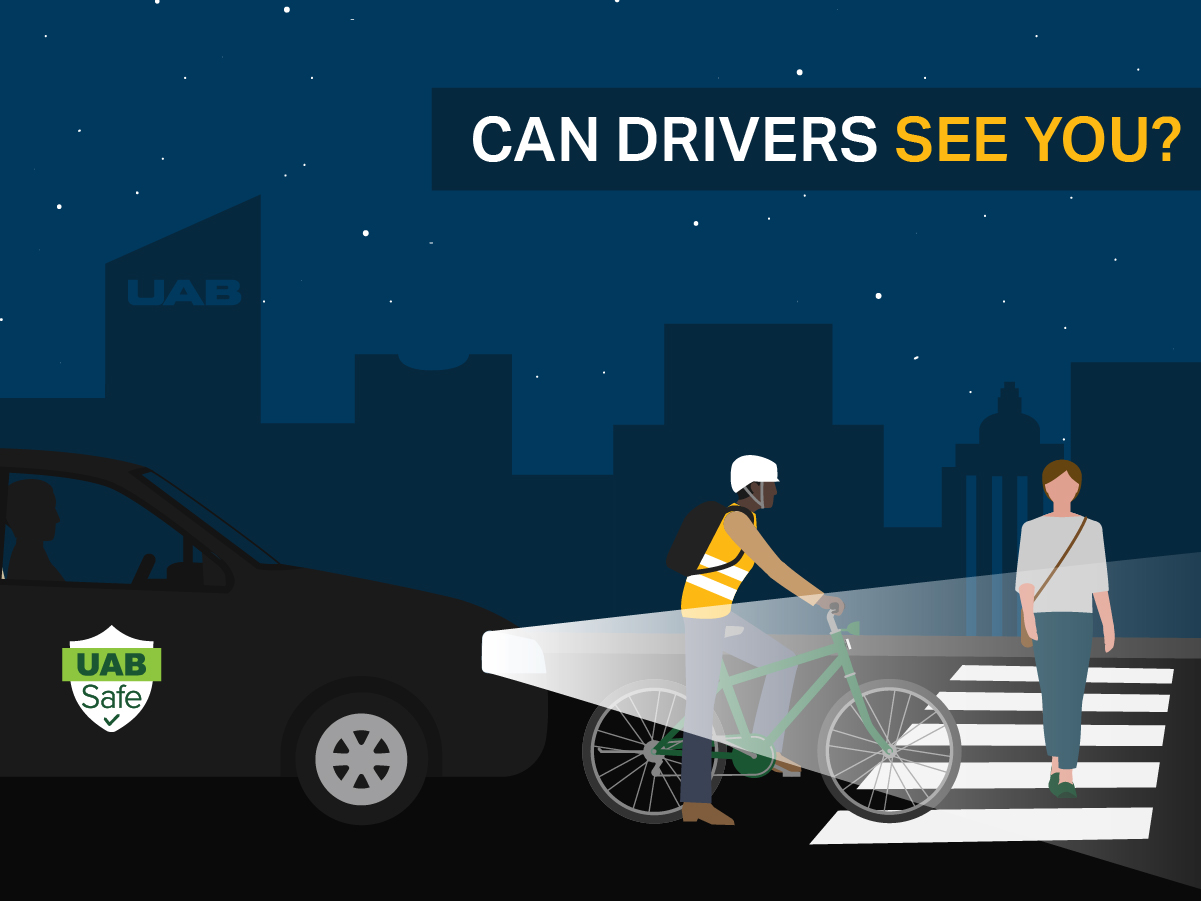
Picture this: One minute you’re sauntering across a city street, eyes on the pedestrian signal that beckons you forward. Then a car barrels through the intersection on your right side, attempting a left-hand turn during a lull in oncoming traffic. In a best-case scenario, you freeze, the driver brakes, you make eye contact and scurry along, irritated but still intact. It happens every day. But add a sunset, dusk, or nighttime conditions to this same situation—or when you think a quick jaywalk will save a few seconds, or you’re lost in the beats of the headphones that cancel surrounding noise—and the odds are not in your favor.
As the days grow shorter and the nights grow longer, visibility issues become a bigger issue for drivers of all types. Pedestrians, cyclists, and scooter riders on busy streets must stay vigilant to stay safe, even if they technically have the right of way.
“Driving into the sunlight can be incredibly difficult for anybody,” said Terri Call, O.D., associate professor in the School of Optometry and low vision optometrist at UAB Eye Care. “The glare that it casts can be debilitating. And when sunshine is right in someone’s eyes, a pedestrian can become a silhouette. As for older drivers, if they have cataracts, glare is the number one thing we hear about. The other thing cataracts do is make everything a bit dimmer, so it’s going to be harder for those drivers to see.”
Call noted that bright colors and reflective patches make individuals much more visible to drivers in dusk and dark conditions. That goes for drivers who are perfectly legal to be behind the wheel—and even some who aren’t. “The reality is that sometimes people who should not be driving are driving,” she noted. “So the more predictable you can be, the more you can minimize your chances of getting hit.”
Lt. Steven Gladden with UAB Police and Public Safety recommends that pedestrians, cyclists, and scooter riders remember the three Bs: Be seen, be predictable, and be paranoid.
- Be seen: Wear bright and/or reflective clothing, use lights and reflectors, and make eye contact with drivers as much as possible.
- Be predictable: Follow the rules of the road. Cross in crosswalks. If you’re on wheels, stop at stop signs and use hand signals. Don’t go back and forth from the sidewalk to the road.
- Be paranoid: Anticipate that drivers may pull out in front of you or cut you off. Have a plan of action. Watch for brake lights, turned wheels, and drivers who might open doors from parked cars. Use your eyes and ears to stay aware of what’s around you. Don’t stare at your phone or block environmental sounds with headphones.
The most common accident that involves individuals and drivers on city streets is the left turn into a crosswalk, but another common issue is when a driver passes a cyclist on the left and then immediately turns right. And of course, the relative quiet of electric vehicles means they can sneak up on anyone.
In addition to being seen, being predictable, and being paranoid, Gladden recommends whistling or becoming animated if you need to in an effort to catch a driver’s attention. “Be over the top if you need to,” Gladden said. “Anything to not get hurt.”